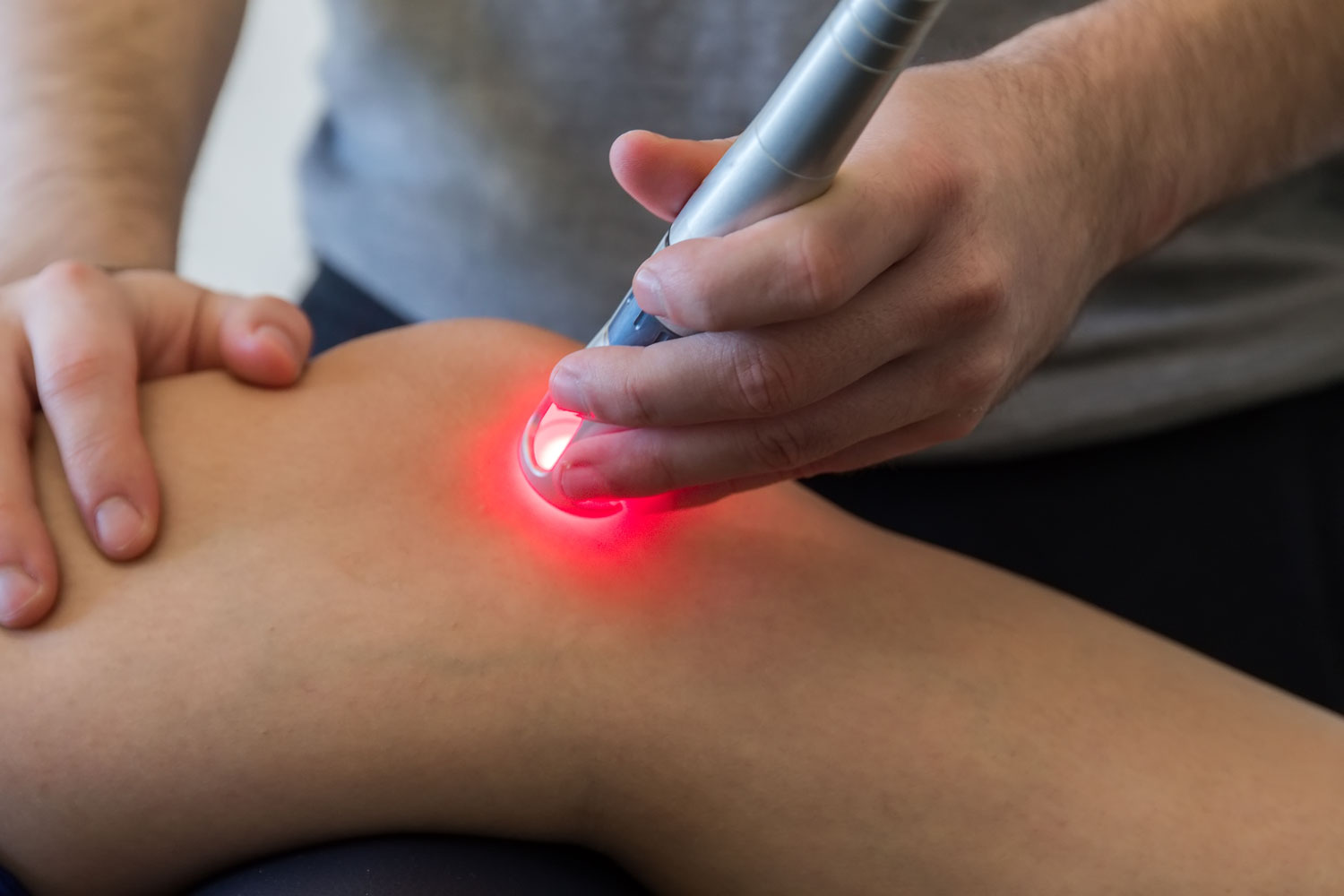Chiropractic care has gained widespread recognition as an effective and natural approach to managing various musculoskeletal conditions. At the heart of chiropractic treatment lies spinal adjustments, a therapeutic technique designed to restore joint function, alleviate pain, and promote overall well-being. Within the realm of chiropractic adjustments, there are primarily two methods—manual adjustments and instrument-based adjustments. In this comprehensive blog post, we will delve deeper into each technique, exploring their benefits, drawbacks, and comparing their effectiveness to determine which approach might be better suited for different individuals.
Contact us for:
Manual Chiropractic Adjustments
 Manual chiropractic adjustments involve the skillful and experienced hands of the chiropractor to apply controlled and precise force to specific areas of the spine or joints. These adjustments usually encompass various techniques, such as spinal manipulation and joint mobilization, aiming to realign the vertebrae and improve joint mobility. The main advantage of manual adjustments lies in the personalized care they offer. Chiropractors can immediately assess patient feedback and tailor the treatment based on individual responses, providing a customized approach to each patient’s unique needs.
Manual chiropractic adjustments involve the skillful and experienced hands of the chiropractor to apply controlled and precise force to specific areas of the spine or joints. These adjustments usually encompass various techniques, such as spinal manipulation and joint mobilization, aiming to realign the vertebrae and improve joint mobility. The main advantage of manual adjustments lies in the personalized care they offer. Chiropractors can immediately assess patient feedback and tailor the treatment based on individual responses, providing a customized approach to each patient’s unique needs.
Furthermore, the hands-on nature of manual adjustments establishes a deeper connection between the chiropractor and the patient. Patients often find this direct interaction comforting, as it fosters trust and enables them to actively participate in their treatment process. This personalized touch can also lead to enhanced patient compliance and overall treatment satisfaction.
However, some concerns have been raised regarding manual adjustments. Patient comfort may be an issue, as some individuals might find the experience slightly uncomfortable or unsettling, especially during their initial sessions. Additionally, the effectiveness of manual adjustments can be dependent on the practitioner’s skills and experience, leading to some variability in treatment outcomes. Patients seeking manual adjustments should, therefore, seek out chiropractors with extensive experience and a solid reputation to ensure the best possible results.
Instrument-Based Chiropractic Adjustments

In contrast, instrument-based chiropractic adjustments involve the use of specialized chiropractic instruments to deliver controlled impulses to the targeted areas. These instruments, such as the Activator or Impulse Adjusting Instrument, allow chiropractors to apply precise and consistent force to the spine or joints without relying on manual techniques. One of the primary benefits of instrument-based adjustments is their accuracy and the reduced amount of force required. This gentler approach may be particularly appealing to patients with certain medical conditions or those who feel apprehensive about manual manipulation.
Another advantage of instrument-based adjustments is the standardization of the treatment process. With manual adjustments, there might be slight variations in the techniques used by different chiropractors. However, instrument-based adjustments follow specific protocols, ensuring a consistent treatment approach regardless of the chiropractor performing the adjustment.
Nonetheless, one potential drawback of instrument-based adjustments is the reduced level of immediate feedback compared to manual adjustments. As these tools rely on technology, some patients might miss the hands-on approach and direct interaction they receive with manual adjustments.
Comparing Effectiveness and Safety
As patients consider their options between manual and instrument-based chiropractic adjustments, they often seek to understand which approach is more effective. While both methods have demonstrated positive outcomes for patients, definitive evidence declaring one method superior to the other remains limited. Numerous research studies have attempted to compare the effectiveness of manual and instrument-based chiropractic adjustments, but factors such as patient variability, the complexity of conditions being treated, and the expertise of the chiropractor make it challenging to reach a conclusive verdict.
When it comes to safety, both manual and instrument-based adjustments are generally considered safe when performed by licensed and qualified chiropractors. However, certain patients, such as those with osteoporosis, arthritis, or spinal abnormalities, may benefit from the gentler approach offered by instrument-based adjustments. It is crucial for patients to communicate openly with their chiropractors about any pre-existing medical conditions or concerns to ensure the chosen method aligns with their health needs.
Personalization and Patient Comfort
Personalization plays a pivotal role in chiropractic care. Each patient’s condition is unique, and tailoring treatment to their specific needs is vital for optimal outcomes. Manual adjustments have a clear advantage in this regard, as chiropractors can instantly assess the patient’s response to the treatment and make adjustments accordingly. This real-time feedback loop allows chiropractors to adapt their techniques to suit the patient’s comfort level and response, fostering a more patient-centered approach to care.
In contrast, instrument-based adjustments may lack the same level of personalization, primarily due to the absence of direct patient feedback during treatment. However, chiropractors who employ instrument-based adjustments often compensate for this limitation by taking a more thorough pre-adjustment assessment, gathering detailed information about the patient’s medical history and symptoms to devise an appropriate treatment plan.
Patient comfort is a subjective aspect that can significantly impact the overall treatment experience. Some patients might find the hands-on approach of manual adjustments more reassuring and comforting, fostering a sense of trust in their chiropractor. On the other hand, others may appreciate the precision and reduced force of instrument-based adjustments, especially if they have concerns about the forceful nature of manual manipulation. Understanding patient preferences is essential for chiropractors to create a positive and accommodating treatment environment.
Practitioner Training and Expertise
Both manual and instrument-based chiropractic adjustments require specific training and expertise. Manual techniques demand a high level of skill, which may vary among practitioners. Chiropractors undergo extensive training to master manual adjustments, honing their palpation skills, and developing a keen understanding of the musculoskeletal system. The effectiveness of manual adjustments is closely linked to the practitioner’s experience and proficiency in the chosen techniques.
Similarly, chiropractors who use instruments also undergo specialized training to ensure their proficiency with the equipment. Learning the nuances of instrument-based adjustments is essential to deliver accurate and effective treatments. Chiropractors using these tools typically receive certification in specific adjusting techniques, ensuring they possess the necessary knowledge and skills to perform adjustments safely and efficiently.
Ultimately, the effectiveness of chiropractic care, regardless of the method used, heavily relies on the practitioner’s experience, diagnostic abilities, and treatment approach. Patients are encouraged to seek chiropractors who are experienced in their chosen method to maximize treatment benefits and ensure a positive experience.
Cost and Accessibility
The cost of chiropractic adjustments can vary based on several factors, including the chiropractor’s location, experience, and chosen method of treatment. Manual adjustments may be more readily available, as they are the traditional approach used by many chiropractors. As such, patients might find manual adjustments to be more accessible across a broader range of chiropractic practices.
In contrast, instrument-based adjustments, while becoming increasingly popular, may still be less common in some practices. However, as awareness and interest in instrument-based techniques continue to grow, patients should have more options to choose from in the future.
When considering the cost of chiropractic adjustments, it is essential to weigh the benefits against the financial investment. The value of effective chiropractic care in managing pain, improving mobility, and enhancing overall well-being should not be underestimated. Patients are encouraged to seek a balance between cost considerations and the quality of care provided.
Regarding insurance coverage, both manual and instrument-based adjustments are generally covered by health insurance plans. However, insurance coverage can vary based on the specific policy and the conditions being treated. Patients should verify coverage details with their insurance providers to ensure they can access the chiropractic care they need.
Conclusion
The question of whether manual or instrument-based chiropractic adjustments are better is not a simple one to answer definitively. Each method has its unique advantages and considerations, and the decision should be based on individual patient needs and preferences. Some patients might find manual adjustments more suitable, appreciating the hands-on approach and immediate feedback, while others may prefer the precision and reduced force of instrument-based adjustments.
The effectiveness of chiropractic care, regardless of the method used, heavily relies on the practitioner’s experience, diagnostic abilities, and treatment approach. Patients are encouraged to consult with a qualified chiropractor to discuss their condition, concerns, and treatment goals. With the guidance of a skilled professional, patients can make an informed decision and embark on their journey towards improved musculoskeletal health and overall well-being.
As the field of chiropractic continues to evolve, ongoing research and advancements in technology may shed more light on the comparative effectiveness of manual and instrument-based adjustments. However, it is essential to recognize that the heart of chiropractic care lies in the dedication of chiropractors to the well-being of their patients, regardless of the method used to achieve optimal health outcomes.

